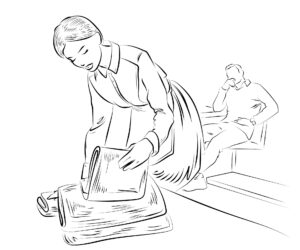
„We need brightly lit streets to protect women from rape!” Really? Seriously?!? I’ve reached the point where I get angry – and I have some good arguments why we do not need so much light.
I frequently get this statement. No matter how many arguments I have for the protection of insects, birds, hedgehogs or plants. No matter how much energy we waste. No matter how many residents complain about the light trespassing into their bedrooms. At the end somebody will claim that we need it for safety reasons. Honestly, I can’t hear it anymore. Why? Here are the reasons:
Women need protection from attacks – but dark streets are not the real problem here.
I am a small woman. I have been sexually harassed several times, verbally and physically. At my workplace, in public transport, in private company, on the dance floor. Never have I been harassed in a dark street! Every single time I complained about being harassed or tried to support another harassed women, I was told that it probably hadn’t been that bad. We should just dress or behave differently, than it wouldn’t happen again. I make the same experience in public networks. Aggression against women is usually downplayed or ignored.
Strangely, when it comes to street lights, attacks on women suddenly become very important. Suddenly we need to use lots of lights, the entire night. To make sure that every women can walk through a park at 3 am. I would be thrilled by so much attention for my safety – however, all this light won’t solve the real problems.
I won’t say that no women get rape in a dark alley. I also don’t want to switch off all lights, at least not at all places. And I know the awkward feeling to walk along a dark street at night. It’s a feeling many men feel to. And we should consider this fear of darkness and create well lighted areas that increases visibility without glare. But we must also understand that quite often our fear is not caused by the darkness, but by other characteristics of the place like litter, graffiti, or lack of people that might protect us.
Light is as annoying as noise – but instead of coming up with sensible regulations are we told to accept the light, no matter how painful it might be.
The problem with all the light is that it creates a conflict or interest. Bright light is not only bad for the environment, it can also be a burden for the residents. I frequently get calls or emails from desperate people. The light trespasses into their private spaces, makes it hard to sleep, converts the garden into a cold, ugly waiting room. “I am denied the experience of the night”, so the words of a woman who cried at the phone. I am not the only one to get these phone calls. The number of organisation for the preservation of darkness is growing globally. So is the number of despairing people. If they contact their municipalities, they usually get the same answers: “We need that light for people to feel safe and to prevent crime. Use blinds if you can’t sleep.”
Have you ever tried to sleep with the blinds down in a hot summer night? The room can become very stifling. A German judge decided that nobody should be forced to sleep with the blinds down just because the outdoor lights are too bright (LG Wiesbaden 10 S 46/01, Germany).
Sleeping with the blinds down also means to wake up in the dark every morning. No soft start into the day, because our internal clock still thinks it’s in the middle of the night. We need a brutal alarm clock to rip us out of our sleep. And if you wake up in the middle of the night, you can’t see anything. Pitch black. You have to switch on the lights to find the bathroom. Lots of people don’t even have the option to install external blinds. They are told to use an eye mask. Honestly, would you accept to wear earplugs every night just because some people feel safer if there is some continuous background music outside? I don’t think so, and there are laws against noise. In most countries there are also laws against light immissions, however they are often ignored.
Instead, residents are told to live with the disturbance. Two needs are put against each other: The need for the feeling of safety and the need for healthy sleep. On first sight, it is hard to decide what’s more important. What good is healthy sleep if I am mugged or raped?
Light doesn’t increase safety at night, but we cling to this idea because the real solutions are complex.
Several studies have looked at the impact of light on safety. The british statistician Paul Marchant and the German architect, criminologist, and former police woman Dunja Storp are not convinced of most of them.
The majority of these studies are methodically flawed, for example they have asked residents for their personal feelings instead of checking the police statistics. This means that they measure the feeling of safety, not the actual rate of crime and traffic accidents. In many cases, there is no real comparison, neither to the time before the lights have been changed nor to neighbouring areas. Also these studies contradict each other: In some places more light brings positive results, in other negative results, in some places nothing changes.
In the last years, a few well designed studies have been done in the UK. The LANTERNS study (Steinbach et al., 2015) analysed traffic accidents from 69 councils in England and Wales between 2000 and 2013. There was no correlation with dimming, curfews, or the colour of light (orange or white). An analysis of UK traffic accidents between 2004 and 2013 showed no reduction after LEDs had been installed (Marchant et al., 2020). Instead, the number of traffic accidents increased in area with new street lights.
As part of the Sustainable Development Goals, a worlwide study of traffic accidents was published in Lancet recently (Vecino-Ortiz et al., 2022). According to the authors, the most important reasons for traffic accidents are speeding, drunk driving, and lack of wearing seat belts or helmets. Street light isn’t mentioned a single time. It’s also interesting to look at the recommendations of the German Council for Traffic Safety (Deutsche Verkehrssicherheitsrat e.V.) from 2003. They suggest pedestrians and cyclists should wear reflective clothes.
Brighter street lights, so their opinion, could be counterproductive, because they could negatively impact the speed of cars – they could drive faster! – or force pedestrians even more into the background. (“Verbesserungen bei der Markierung und der Ausstattung der Straße dürften dagegen eher kontraproduktiv sein, da sie einerseits die Geschwindigkeit der Fahrzeuge negativ beeinflussen – es würde durchschnittlich schneller gefahren werden! – und andererseits den Fußgänger noch mehr in den Hintergrund drängen würden.”)
But what about crime? The LANTERNS study (Steinbach et al., 2015) analysed the British police statistics between 2010 and 2013. In some councils, crime increased, in others it didn’t. There was a small increase of robbery in areas with part-time lighting, but burglary, car thefts, and attacks on people were reduced. On nationwide scale, a reduction of street lighting was correlated with a reduction in crime. Another study analysed crime in the Thames Valley district between 2004 and 2013. They found no increase of crime during curfews, but a decrease of car thefts and break-ins (Tompson et al., 2022). The authors think that car thieves need the light to perform their crimes. Burglars, by the way, prefer to come during daytime, when nobody is at home – at least according to the German police statistics.
So these data do not support the claim that more light automatically means more safety. Nonetheless, many people feel safer if the streets are bright. Isn’t that reason enough for street lights? Let’s have a look at the costs: To install and run street lights, you need to pay money. At the moment, many streets that haven’t been illuminated get street lights simply because LEDs are energy-efficient. This regularly happens against the wishes of the residents – thought often they have to pay for these lights. The public money for these lights could be used for children’s daycare or a library.
Additionally, even energy-efficient light needs energy. Right now, the Russian war against Ukraine causes an energy crisis for many European countries. Why not switch off during night hours in residential areas? In 2014, this has been done in 14% of German towns. 70% of German towns dimmed their lights at night (PriceWaterhouseCoopers, 2015). And no, German towns are not a paradise for crime, they are safe places.
Not enough reasons to outweigh the fears of some residents? After all, we all want light at night, don’t we? At least this is what I am frequently told by council members, light planners, and lots of other people. Everybody wants light – with exception of all those residents that are unsettled by the bright lights that trespass into their private space. Lights from streets, sport ovals, schools, church towers, private houses. Those people, who can’t find rest anymore in all this lights. Many can’t sleep. But they are told to be quiet (often even ridiculed) and are expected to suffer. What about them?
Sleep problems are a health issue and must be taken at least as serious as the fear to walk in a dark street.
If you can’t sleep you get sick, and almost all diseases related to sleep disorders – and can even be explained by lack of sleep – are more common in brighter cities than in similar sized dimmer cities. We have a growing number of studies for this. Use of sleeping drugs and stimulants is higher in bright cities, there is a higher risk of depression, obesity, and some forms of cancer (i.e. breast cancer). Even a slightly lit bedroom reduces sleep quality and raises blood pressure measurably – which in the long run increases the risk for a heart attack. If you look at these data you will see that the arguments for health issues through light are far more reliable than the data for safety. The advantages of a dark residential area are probably higher than those of the subjective feeling of safety – especially if we stop telling people the fairytale that light would keep them safe.
But maybe you are the kind of person who is reluctant about scientific data. It’s all statistics, but what about the actual people? In the last ten years I have often heard how unpleasant it is to walk in the dark. This statement is often given rather emotionless. It’s often about other (hypothetical) people’s fear while the person themselves, of course, is brave enough to face the darkness. In many cases I can feel the anger about the ignorant people who don’t know that darkness is dangerous. Quite often it’s men arguing for the sake of women’s safety. They can get aggressive about those stupid activists who want to switch off the lights.
The other side often sounds different. Despair, helplessness, anger. Many tears. Personal stories. These people are suffering themselves, they don’t speculate about other people. And they often know other real people who suffer.
We need to find a fair and evidence- based balance between perceived safety and health – towards health

We need to find the balance between our wish to walk in the light even at night because we have been brought up to be afraid of the dark and the necessity of healthy sleep in darkness. This decision isn’t easy. We need to take fears seriously – on both sides. Nonetheless, we should not forget the facts. If we want safe streets, we need to find real solutions. Unfortunately, these are more complex and expensive than putting up more bright lights. For a politician, it’s tempting to invest in new street lights, because they are easily seen. The politician can say: “Look, we do something!” Alas, this something doesn’t solve the problem and actually causes harm.
I don’t suggest to switch off all lights. We do need some light to get around. But good light planers will bring the right amount of light into the right places. It is possible to avoid over-lighting, glare, and light trespass. Unfortunately, there is usually no money for good light planing in the budget, and good light planers are hard to find. But those who follow the dogma that more light would mean more safety will not have happy citizens – and might have to pay lots of money for changes in their new public lighting.
I don’t have the perfect solution and I don’t want to take away the light from people. But could we please start to take those seriously who suffer from all the light out there? Could we please give them the same consideration as the people who are afraid of the dark? And could we please try to find a fair compromise with less light? And maybe – just as a daring thought – could we start focusing on the real reasons for crime and traffic accidents instead of selling light as the sole solution? Because it isn’t. Too much light just causes more problems.
References
Deutscher Verkehrssicherheitsrat e.V., 2003. Unfälle in der Dunkelheit. Schriftenreihe Verkehrssicherheit Nr. 12.
Landgericht Wiesbaden. 2003. Dauerhafter Betrieb einer Außenleuchte. LG Wiesbaden 10 S 46/01.
Marchant, P., Hale, J.D., Sadler, J.P., 2020. Does changing to brighter road lighting improve road safety? Multilevel longitudinal analysis of road traffic collision frequency during the relighting of a UK city. J. Epidemiol. Community Health 74, 467–472.
PriceWaterhouseCoopers, 2015. Straßenbeleuchtung im Energiesparmodus?
Steinbach, R., Perkins, C., Tompson, L., Johnson, S., Armstrong, B., Green, J., Grundy, C., Wilkinson, P., Edwards, P., 2015. The effect of reduced street lighting on road casualties and crime in England and Wales: controlled interrupted time series analysis. J. Epidemiol. Community Health 69, 1118–1124.
Tompson, L., Steinbach, R., Johnson, S.D., Teh, C.S., Perkins, C., Edwards, P., Armstrong, B., 2022. Absence of Street Lighting May Prevent Vehicle Crime , but Spatial and Temporal Displacement Remains a Concern. J. Quant. Criminol.
Vecino-Ortiz, A.I., Nagarajan, M., Elaraby, S., Nicolas Guzman-Tordecilla, D., Paichadze, N., Hyder, A.A., 2022. Series Road Safety 2022 2: Saving lives through road safety risk factor interventions: global and national estimates. Lancet 400, 237–250.

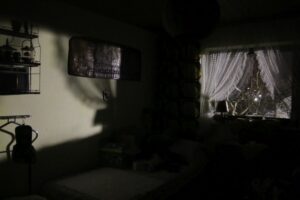
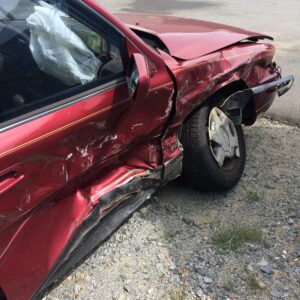
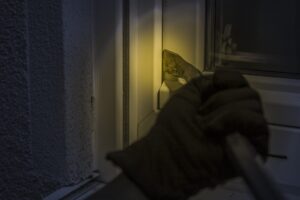
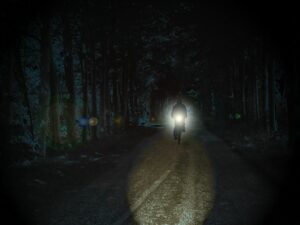
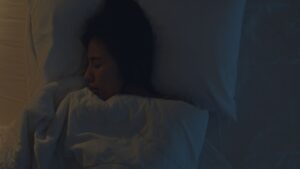
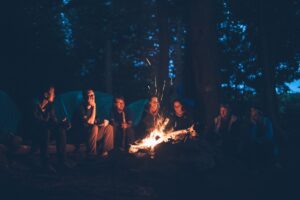
The solution is to educate the police. I know it is possible because I have done it, in as little as 30 seconds with our lamp demonstration or with our “disappearing pedestrian” video or a talk. We will not solve this problem until the police and environmentalists are giving the same lighting guidance. To that end, we in Houston, TX are gathering images of high glare security lighting at the sites of fatal auto-pedestrian accidents, often near bus stops. More is not better, better visibility at night happens with just a bit of light that is warmer and well shielded. If we renamed Dark Sky lighting “new improved non-glare design for best visibility” we would not even have this problem. But so far lighting advocates have been slow to engage the police and show the public what good quality lighting using LED technology looks like. To that end, we developed http://www.softlighthouston.com to educate the public. See the Education and Gallery pages. Ultimately we need worldwide lighting education for the police and quick demonstrations they can use with the public. We have a 60 second lamp demonstration and 20 second disappearing pedestrian video that work every time. Seeing is believing.
Thank you very much for this comment, Deborah. This is indeed true, and your website shows good example for better lighting design. At the moment, light is designed to match theoretical ideas that mostly haven’t been validated. We need to design light for the human eye and also for our internal clock and the nature. That’s possible, and education is the best way to achieve it.
Pingback:Learning From Europe: Beyond Symbolic Dark Landmarks to Save Energy at Night – Kiến Trúc Khôi Thanh
Pingback:Studying From Europe: Past Symbolic Darkish Landmarks to Save Power at Evening - bluelionmanagement.com